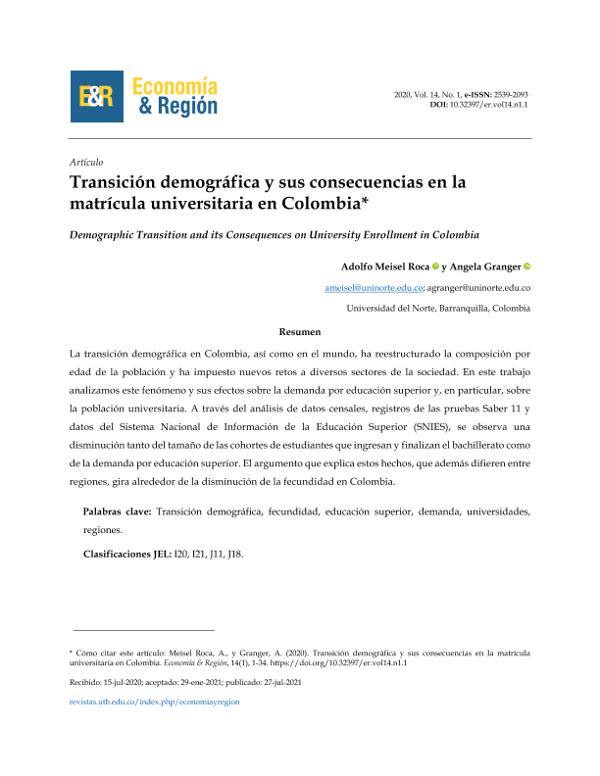Abstract
La transición demográfica en Colombia, así como en el mundo, ha reestructurado la composición por edad de la población y ha impuesto nuevos retos a diversos sectores de la sociedad. En este trabajo analizamos este fenómeno y sus efectos sobre la demanda por educación superior y, en particular, sobre la población universitaria. A través del análisis de datos censales, registros de las pruebas Saber 11 y datos del Sistema Nacional de Información de la Educación Superior (SNIES), se observa una disminución tanto del tamaño de las cohortes de estudiantes que ingresan y finalizan el bachillerato como de la demanda por educación superior. El argumento que explica estos hechos, que además difieren entre regiones, gira alrededor de la disminución de la fecundidad en Colombia.
Demographic transition in Colombia, as well as in the world, has restructured the age composition of the
population and has imposed new challenges on various sectors of society. In this paper we analyze this
phenomenon and its effects on the demand for higher education and, in particular, on the university
population. Through the analysis of census data, records of the Saber 11 tests and data from the National
Information System for Higher Education (SNIES in spanish), we find a decrease in both the size of the
cohorts of students entering and completing high school as well as the demand for higher education. The
argument that explains these facts, which also differ between regions, revolves around the decline in fertility
in Colombia.














